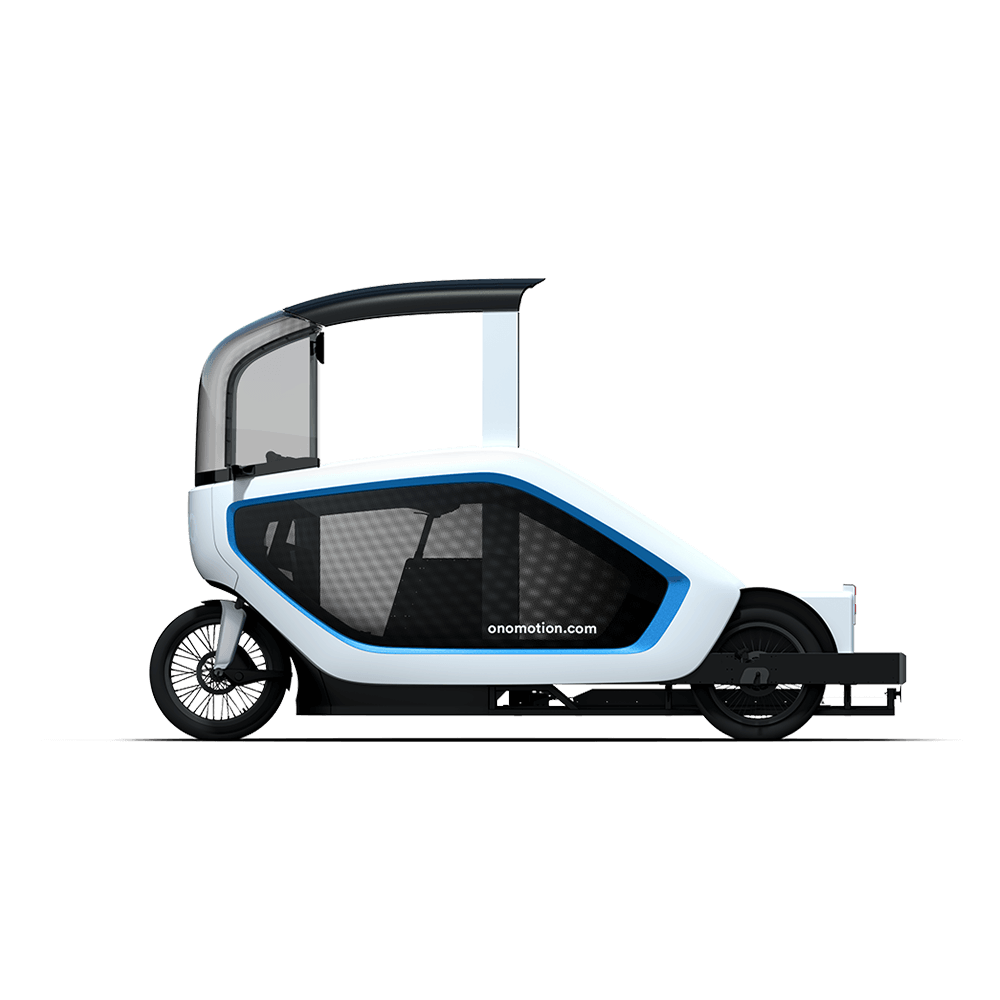These sleek electric cargo bikes are the future of urban delivery












From the side, a new delivery vehicle from a German startup called Ono looks like a tiny truck. But it’s actually an electric bike, narrow enough to easily move through traffic and even fit in a bike lane when necessary.
As a growing number of delivery companies move toward electric vehicles—such as Amazon, which has 100,000 custom electric delivery vans on order from Rivian along with another 1,800 electric vans from Mercedes-Benz—Ono argues that size also matters as online shopping grows at a time when roads are already crowded. “The physical footprint of an Ono is only a quarter of the size compared to an electric truck,” says CEO Beres Seelbach. “So it causes no more traffic jams and is much easier and more flexible to operate.” It’s also cheaper to maintain. And like other electric vehicles, it also eliminates emissions and air pollution.
One recent study in Seattle found that delivery drivers spend at least 28% of their time looking for parking. When they don’t find it, they often end up blocking traffic. A separate study from Texas A&M found that while trucks make up around 7% of traffic, they account for 28% of congestion. And, like other larger vehicles, they get stuck in heavy traffic themselves. While a large Mercedes van has four times as much space for boxes, the e-bikes can compete by moving quickly and refilling at hubs, where a new cargo container can be loaded on the back of the bike in roughly a minute.
“Ono could work as a stand-alone delivery solution in a dense sector and within a radius,” says Seelbach. “But it is exponentially more interesting for operators when combined with so-called city hubs, and in this case, Ono vehicles replace traditional delivery trucks.” The cargo units are delivered to the city hubs by truck at off-peak hours, and then the bikes can handle the final deliveries. (In the future, trains, trams, or boats may handle the first step of delivery rather than trucks.)
Similar systems are in the early stages elsewhere, including in Oslo, where the delivery company DB Schenker has tested long cargo bikes that can carry two containers of packages from city hubs, and in Seattle and New York City, where UPS recently piloted e-bike delivery after deploying it in European cities. Amazon and DHL are also piloting e-bike delivery in New York. Ono’s bike was developed in part after seeing what UPS was using, and realizing that there was a need for something better designed for the job. In the new vehicle, drivers are protected from the weather with a fully enclosed cabin. The vehicle unlocks and starts with an RFID chip, instead of a key, to prevent theft and make it as fast as possible for the driver to jump in and leave. The cargo boxes are designed to be rapidly changed. Inside, there’s a smartphone holder, USB plug, and a safe for the driver’s belongings.
The company ran several short pilots, testing the optimum number of vehicles and hubs to serve different neighborhoods, and is launching in four German cities this fall. In Berlin, for example, there will soon be five hubs in operation for the service, with more being planned. EIT InnoEnergy, a company that supports innovation in sustainable energy, is investing more than 3 million euros over the next two years to help it expand. By 2025, the startup aims to have 14,000 vehicles operating in more than 60 cities. Eventually, Seelbach says, it’s feasible that e-bikes could replace trucks for last-mile delivery, as regulations and miniature containers are standardized and the number of city hubs grows.
